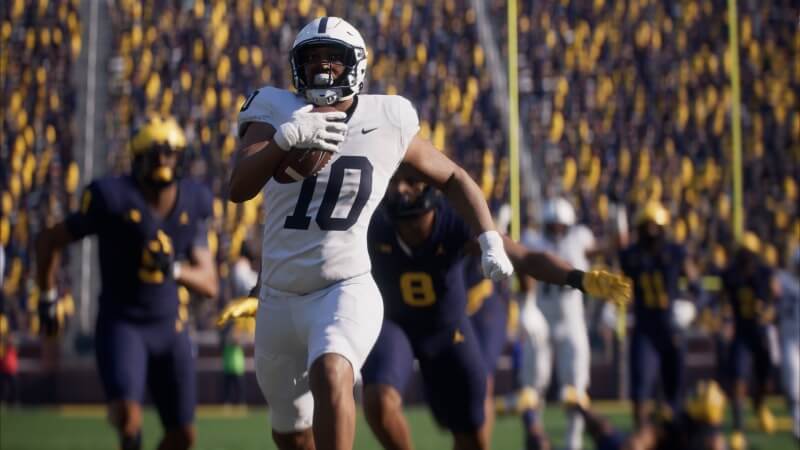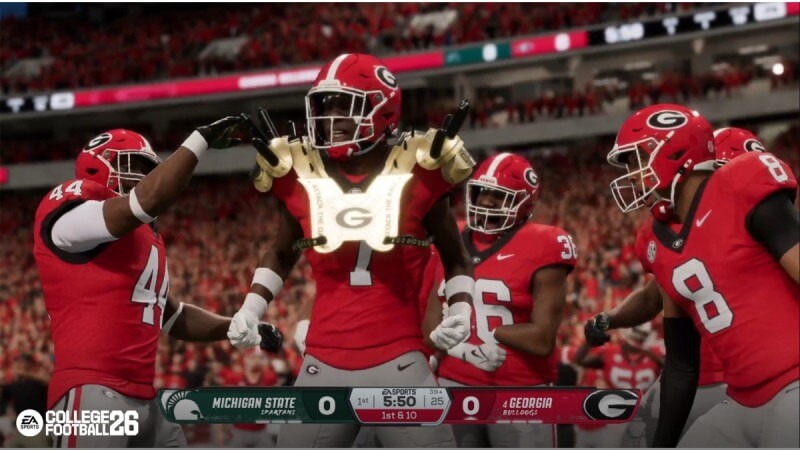Whoa Nellie, EA Sports College Football 26 Avoids a Sophomore Slump
But is it perfect? Not so fast, my friend!

After 11 years off, EA’s got back-to-back championship contenders: College Football 26 isn’t perfect, but it’s a good follow-up to College Football 25. Expanded features leave room for bugs and glitches—some of last year’s have been fixed, while others are resilient. Player movement and interaction is more fluid and realistic, combining with expanded playbooks and augmented presentation for a richer on-field experience. The career modes have been updated, mostly for the better, but new player onboarding remains lacking. Despite bugs and limitations, College Football 26 is fun, engaging, and has me hyped for fall Saturdays.
Freshmen will have a learning curve, though. Unfortunately for those new to college football video games, there’s no mandatory tutorial. For instance, “Placement and Accuracy” passing options introduced in Madden NFL 23 return to CFB 26, but they do not come with instructions. On-field tips appear the first time you fire up a game, and fade quickly, but there are Coaching Tips and Coverage Visual Assists that can expedite learning. And you can turn on a permanent “trainer,” which displays buttons for basic play execution.
The way to learn, though, is jumping into Play Now. Oddly, Ultimate Team does offer tutorials; in this mode you build a squad—including playbooks and uniforms, but most importantly players—based on trading card mechanics that serve as a microtransaction channel. Outside Ultimate Team are Mini Games, which are good for developing basic skills, and Free Practice remains an option for tooling around on both the front end menu and within Dynasty mode. Sometimes you have to learn by doing.
On the field, new dynamic lighting based on weather, season, and time of day recreates an authentic passage of time. It’s like watching a game with a late afternoon kickoff time. Running and tackling physics are improved; defensive pursuit angles are better, not perfect; dropped balls, catches by receivers over defenders, and pass breakups all look and feel sharper—in part because player interactions look more realistic, as does pre-play movement (though manually moving linebackers forward is resultantly choppy). There are new turnover and touchdown celebrations, individual fans in stadium audiences look better (although they sometimes move strangely, and lack the PS2/Xbox era’s College GameDay-style signs), and the stadium atmosphere is electric. The game includes “Toughest Places to Play” rankings visible on a “Stadium Pulse” HUD meter at relevant stadiums, but there’s no in-game access to the full list.
Defensive line stunts (coordinated attack angles by multiple linemen) have made their debut in an EA football game, 21 years after appearing in NFL 2K5 on the PlayStation 2 and original Xbox, and 18 after All-Pro Football 2K8 brought them to the PlayStation 3 and Xbox 360; here you select stunts after coverage. Sometimes the menu display for stunts is blank—usually on the first play of a game, sometimes recurring throughout. But they’re great when they work, totally augmenting your ability to disrupt an offense.
You can sub individual players by position from the playcall screen or on the field. This was a broken playcall feature in Madden 09. Here it is only slightly buggy, though it’s strange you can’t do it from the in-game pause menu like you could three generations ago. If you sub individual players from the playcall screen, the player icons on the playcall screen fade, even if you reverse the substitute. Luckily, it doesn’t prohibitively obscure players.
The no-huddle offensive playcalling screen now accesses all plays utilizing the same personnel from your last huddle, an evolution of the 2010s NCAA Football method. CFB 25’s approach was relying on limited personnel audibles like contemporary Madden.
The wide camera now lets you usually see all offensive players in Wide formations (the key to Veer-and-Shoot offenses run by teams like Tennessee) pre-snap, though not always. Better than last year, but not perfect.
There’s an Increased emphasis on making teams and players stand out through new plays (Penn State, for instance, has plays where the QB and running back shift left together for a direct snap to the RB), new formations (like Rice’s wingback shotgun and pistol formations), and new stances, which give the game an authentic feel as different defensive players move around the field before a play. It looks and feels like real football like never before. Stance options for quarterbacks, running backs, receivers, linebackers, and cornerbacks introduce personality to the players you create for Road to Glory, which quickly endeared the mode to me.
In Road to Glory, you practice to earn coach trust, and balance your time outside of games and practice with doing extracurricular activities (to build leadership or brand) and studying (to stay eligible, or potentially graduate early). Skill points take time to come by, which is emphasized more in College Football B 26 than 25 because of the way you build your player before coming to college. It isn’t quite like NBA 2K, where the single player career leans on pay-to-play microtransactions like Ultimate Team. However, the unbalanced feel of the high school section before you pick your college sure makes the points you get in the Deluxe Edition feel like cheating.
In CFB 25, the star rating is basically a difficulty modifier you pick before choosing a university. The expanded recruiting process provides new frustrations. CFB 26 adapts the old high school scheme from EA’s NCAA series, plus coaches’ recruiting texts, and a signing day presentation (you can pick between three finalist teams’ hats to signify your choice like real highly-touted prospects). This is enriching texture for uneven substance.
-

-

-

-

-

-

-

-

-

-

-

-

-

-

-

-

-

-

-

-

-

-

-

-

-

-

-

-

-

-

-

-

-

-

-

-

-

-

-

-









































